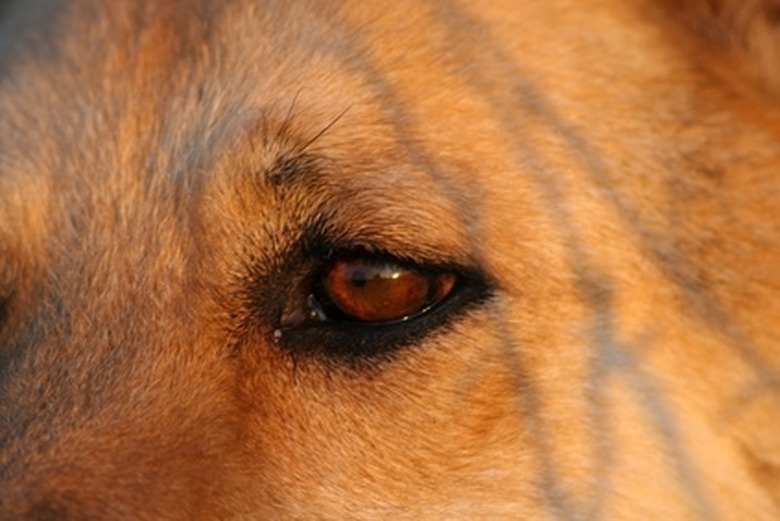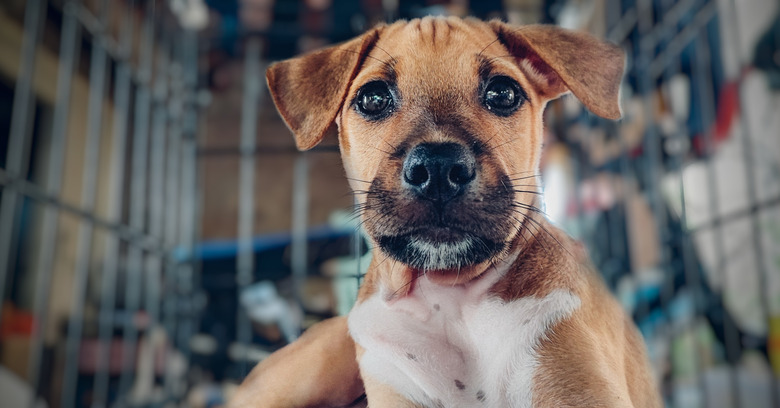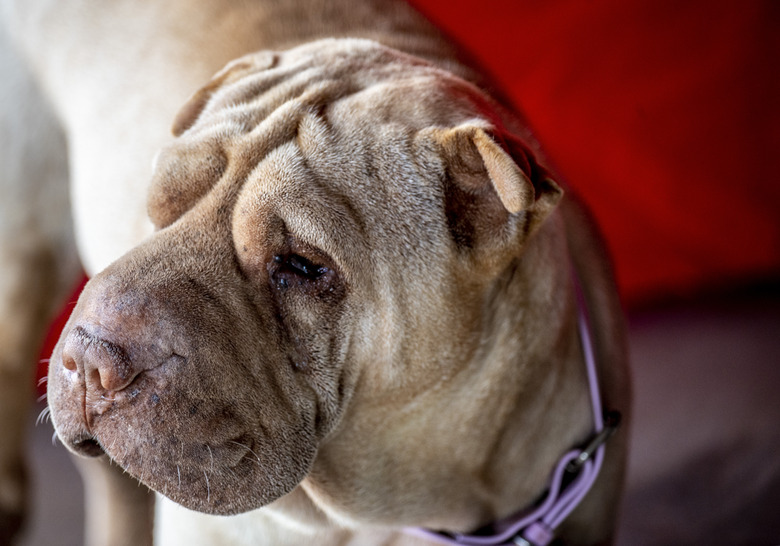Dog Cherry Eye: Management, Surgery & Care
What Do I Do About a Dog With a Cherry Eye?
Cherry eye in dogs is a disfiguring but not painful condition. The third eyelid, or nictitating membrane, which contains a tear gland, prolapses and causes a red bulge in the inner corner of the eye. We spoke with Dr. Jordan Kautz, a veterinarian at Crestview Veterinary Clinic in Austin, Texas, who told us that for most dogs, cherry eye is only unsightly and certainly not life-threatening. However, your veterinarian may recommend surgery to optimize eye health and tear production.
What is cherry eye in dogs?
What is cherry eye in dogs?
In veterinary terms, cherry eye is known as nictitans gland prolapse. In layman's terms, cherry eye means that a dog's third eyelid, located underneath the lower eyelid, has prolapsed out of the protected position it would normally occupy. This prolapse exposes the delicate third eyelid and the tear gland it contains to dry air and other environmental elements. This causes it to swell and become red, resembling a mini cherry.
Causes of cherry eye are not fully understood, but it is widely suspected by dog care experts that weak connecting tissue between the gland and other parts of the eye are to blame. Whatever the cause may be, it results in a tear gland that does not circulate blood properly and cannot perform its tear production.
Are some breeds of dogs more susceptible to cherry eye?
Are some breeds of dogs more susceptible to cherry eye?
Yes, some breeds of dogs are more susceptible to cherry eye. While any dog of any breed can develop cherry eye at any age, the condition usually occurs in young dogs. The gland of the third eyelid is normally anchored to the lower inner rim of the eye by a fibrous attachment. In certain breeds, this attachment may be weaker, increasing the chances of a prolapsed gland. Breeds that are more susceptible to cherry eye include the beagle, bloodhound, Boston terrier, English bulldog, bull terrier, cocker spaniel, Lhasa apso, poodle, Saint Bernard, Shar Pei, and Shih Tzu. It is common for cherry eye in dogs to occur in both eyes.
How to temporarily manage cherry eye in dogs
How to temporarily manage cherry eye in dogs
"Home treatment options for cherry eye are usually temporary and only help for a short period of time," Dr. Kautz says. Home remedies like using anti-inflammatory eye drops can help temporarily, but they don't provide a cure or solution. "While proper moisture, warm compresses and gentle message will allow the gland and third eye lid to be easily pushed back into its correct position, it is very rare for this to last more than a few minutes to hours," explains Dr. Kautz. "Surgery is the only true corrective procedure for this condition." The longer the dog has the condition, the less likely it is that the gland will go back into place without medical treatment or surgery.
The massage method involves gently closing the dog's outer eyelid and then carefully pushing without using much pressure on the area at the corner of the eye where the cherry is located. The idea is to push gently toward the dog's nose in an attempt to pop the gland back into place. Some dog owners report success after three to four massage sessions; others indicate that it takes more than a week of massage. Many used warm compresses to ease the process. A word of caution is necessary: The ocular area being massaged is very delicate, and mishandling can result in damage to the eyeball if not done properly.
Cherry eye surgery for dogs
Cherry eye surgery for dogs
Unfortunately, cherry eye in dogs requires surgery to truly correct the problem. Surgical options can range from $300 to $500 and up to $1,000 depending on what part of the country you live in. It's important to seek treatment sooner rather than later to avoid permanent damage of the tear gland. If your dog's tear production is inhibited, they can develop dry eye, which can impair vision.
Discuss the best surgical procedure with your veterinary ophthalmologist. The most common and effective surgical option is to reposition the third eyelid gland. The surgery has a high success rate, but in some cases, the gland may re-prolapse, requiring a second surgery.
What to expect after your dog's surgery
What to expect after your dog's surgery
If surgery is required, the biggest postoperative issue is keeping your dog from pawing at the eye, which could damage the sutures. The pawing is natural because the healing process involves swelling and itching. Most veterinarians will provide a conelike collar that will fit around the dog's neck and surround their neck and face in a cylinderlike fashion. This keeps the dog from being able to scratch at their face, but it also can hinder eating and drinking.
Caretakers should monitor the dog while they eat and drink and replace the collar immediately when the dog finishes. Healing can take up to two weeks, and it is important to keep the dog's activity level to a minimum.
The bottom line
The bottom line
Cherry eye in dogs occurs when the third eyelid prolapses. It is visually apparent, but cherry eye is usually not a serious health concern. The only permanently effective treatment is surgery. Discuss with your veterinarian whether your dog's cherry eye may pose risks to their eye health, thus requiring surgery.


